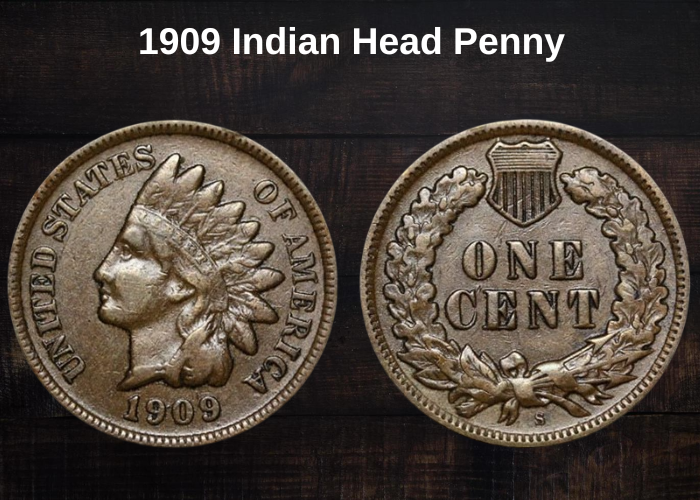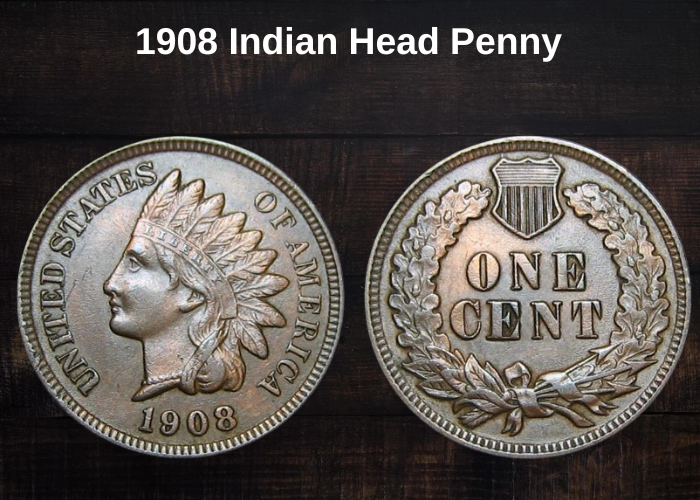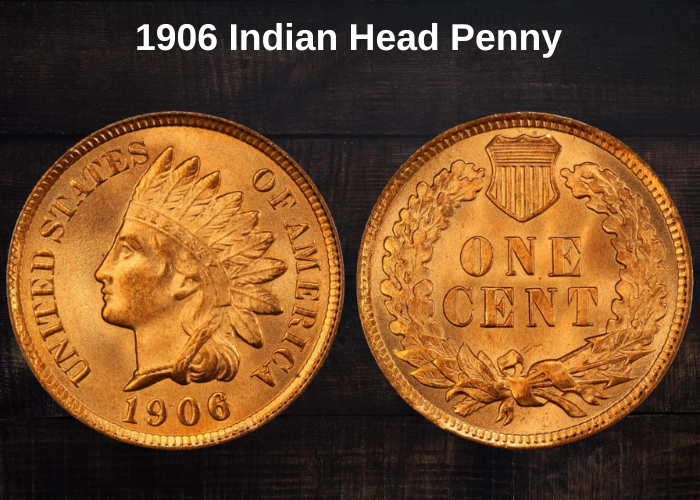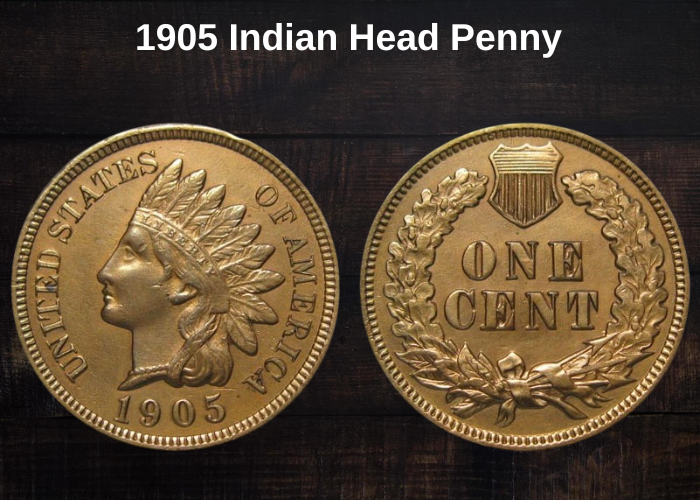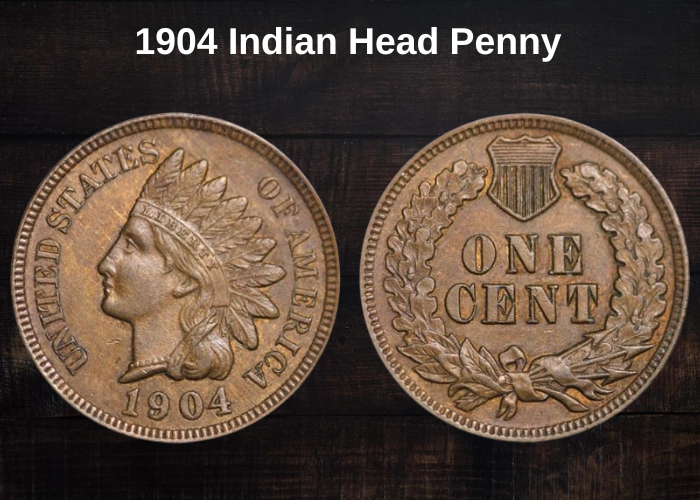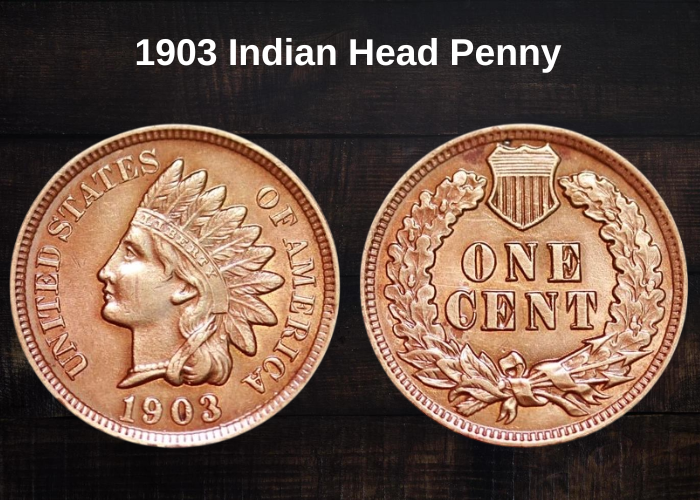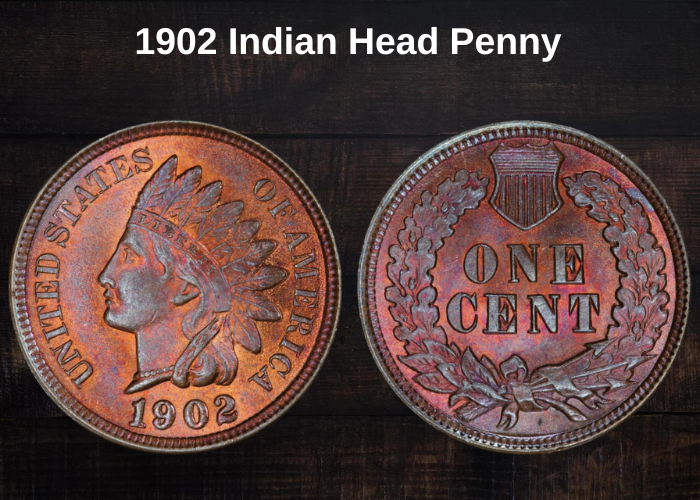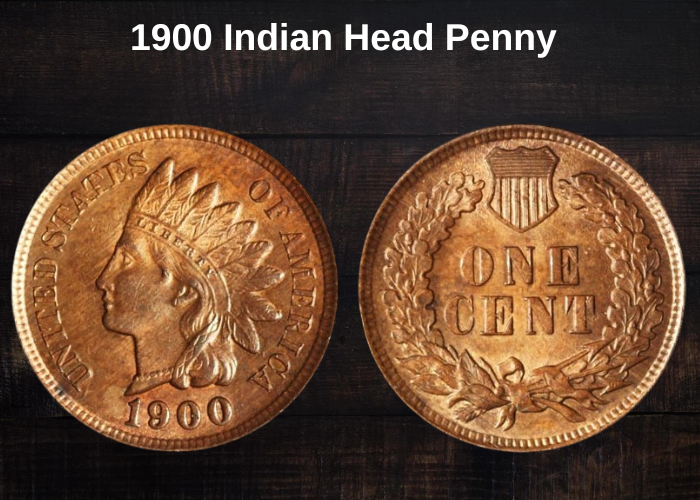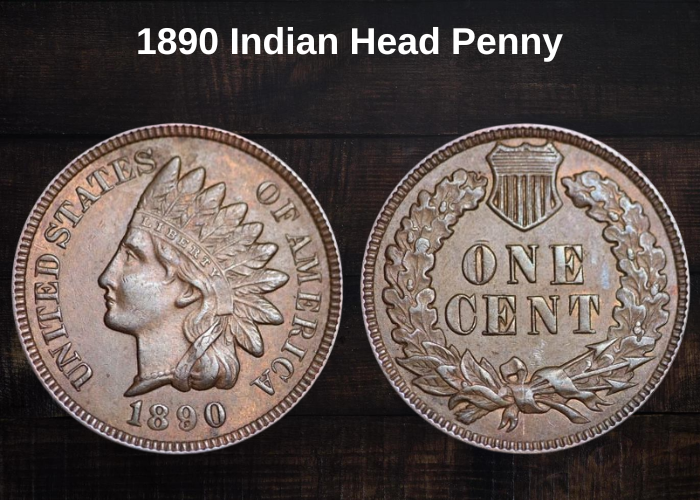
The 1890 Indian Head Penny is a popular coin among collectors, thanks to its historical significance and relatively high mintage. However, its value largely depends on the coin’s condition, with lower-graded pieces being more accessible, while those in excellent condition can fetch higher prices.
Here is a value chart for the 1890 Indian Head Penny, based on the coin’s grade:
1890 Indian Head Penny Value Chart:
| Condition | Value (1890 No Mint Mark Penny) |
|---|---|
| Good | $3 |
| Very Good | $3 |
| Fine | $6 |
| Very Fine | $12 |
| Extra Fine | $22 |
| About Uncirculated (AU) | $40 |
| MS 60 (Mint State) | $80 |
| MS 63 (Mint State) | $115 |
| PR 63 (Proof) | $300 |
- Graded Brown Coins: These values are for coins in brown condition, which is common for most circulated coins.
While the 1890 Indian Head Penny was widely minted, finding one in pristine condition can be rare, which is why the higher-grade versions command such significant prices. If you happen to find one in Mint State (MS 60 or higher), expect it to fetch a much higher price than one in Good condition.
History of the 1890 Indian Head Penny
The first pennies, known as Large Cents, were introduced in 1793 and continued to be minted until 1857. Over the course of 65 years, there were seven variations of this coin, each with different designs, some more appealing than others.
As copper prices rose, the U.S. Mint was forced to reduce the size of these coins, leading to the introduction of the Small Cent series in 1856. After the Flying Eagle cents were minted between 1856 and 1858, the Indian Head penny became the primary one-cent coin.
Despite being less visually striking than their larger counterparts, small cents were more practical for everyday use. Americans quickly warmed to the Indian Head penny, though it was ultimately replaced by the Lincoln cent after half a century. The success of both the Indian Head penny and Lincoln cent led to a long history of minting, contributing to their collectability.
1890 Indian Head Penny Types
| Location | Year | Minted |
|---|---|---|
| Philadelphia | 1890 No Mint Mark Penny | 57,180,114 |
| Philadelphia | 1890 Proof Penny | 2,740 |
| Total | / | 57,182,854 |
The first Indian Head pennies were released into circulation in 1859, featuring a distinctive laurel wreath on the reverse. Starting in 1860, the design was changed to feature an oak wreath, which remained in use until 1909, when the U.S. Mint introduced the Lincoln penny.
It is important to note that the production of these one-cent coins, along with five-cent nickels, was limited to the Philadelphia Mint by law. As a result, nearly all coins minted during this 50-year period lacked a mint mark.
Only pennies minted in 1908 and 1909 were produced at two mints, and you can distinguish between those with no mint mark and those with an S under the wreath on the reverse.
Features of the 1890 Indian Head Penny
Many collectors believe that the design of the obverse of the Indian Head penny was inspired by James Barton Longacre’s daughter, Sarah Longacre. Although Longacre’s intention was to depict a Native American woman, the final image came out resembling a Caucasian woman dressed in Native American attire. Despite this unintended appearance, the coin kept its original name, the Indian Head penny, despite the confusion over the design.
The obverse of the 1890 Indian Head penny
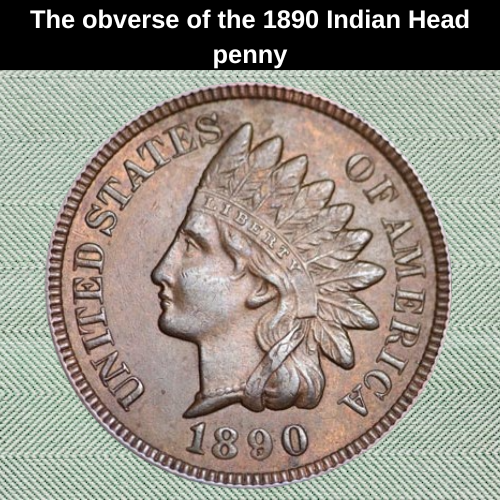
Although Longacre originally intended to create a coin featuring a Native American woman on the obverse, the final design ended up resembling a Caucasian woman. She is depicted wearing an Indian chief’s headdress, which is somewhat unusual when paired with a pearl necklace.
The date, 1890, is located below her portrait, with UNITED STATES to the left and OF AMERICA to the right. A ribbon is placed in her hair, inscribed with the word LIBERTY, further adding to the unique design of the coin.
The reverse of the 1890 Indian Head penny
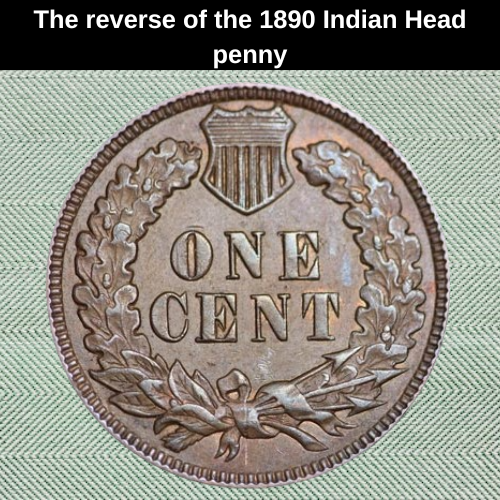
The 1890 Indian Head penny features a simple yet elegant reverse design. At the center, you’ll find the denomination, with a shield positioned at the top.
Unlike the original 1859 pennies, which had a laurel wreath, all subsequent pennies, including this one from 1890, showcase an oak wreath along the rim. The wreath is tied at the bottom with a bow and three arrows, symbolizing strength and unity.
1890 Indian Head penny Details
| Face value | One cent ($0.01) |
| Coin diameter | 0.75 inches/19.05 mm |
| Shape | Round |
| Coin weight | 0.10970 ounces/3.11 g |
| Compound | An alloy of 95% copper with zinc and tin |
| Coin thickness | 0,058 inches/1.47 mm |
| Edge | Plain |
Other features of the 1890 Indian Head penny
The 1890 Indian Head penny has the following physical characteristics:
- Thickness: 1.47 mm (0.058 inches)
- Weight: 0.1097 ounces (3.11 g)
- Diameter: 0.75 inches (19.05 mm)
- Composition: 95% copper alloy
These measurements are consistent with the standard specifications for Indian Head pennies of that era, contributing to their distinct size and feel.
1890 Indian Head Penny Grading
Grading the 1890 Indian Head penny is essential for collectors as it helps determine the coin’s value. The condition of the coin greatly affects its price, especially when the coin is over 100 years old. Even small signs of wear or contact with packaging can influence its grade.
Here’s a breakdown of the coin grading scale, which ranges from Basal State to Mint State:
- Basal State-1 – Coin is heavily worn with little to no visible details.
- Fair – The coin is worn, but major design elements are still visible.
- Very Fair – Similar to Fair, but with slightly more visible details. 4, 5, 6. Good – Some details of the coin are visible, though much of the design is worn. 7, 8, 10. Very Good – More design elements are visible with wear on high points. 12, 15. Fine – Coin shows moderate wear, with a clear outline of design. 20, 30. Very Fine – Coin shows wear but retains much detail.
- Extremely Fine – Coin shows light wear, but most details remain intact.
- About Uncirculated – Coin has minimal wear with almost all details visible.
- Mint State – Coin is in near-perfect condition with no wear.
- Mint State – Coin is excellent with only minor imperfections.
- Mint State – Coin is in perfect condition, with no wear and no signs of handling.
It’s crucial to consult expert grading guides or have a professional appraiser evaluate your coin to ensure the correct grade and value.
1890 Indian Head Penny Value Guides
The 1890 Indian Head penny had a mintage of 57,182,854, all produced at the Philadelphia Mint. Most of these coins were regular strikes intended for circulation, but a small number, approximately 2,740 proof coins, were specially produced for collectors. These proof coins, unlike the regular strikes, were crafted with a higher level of care, featuring a mirror-like finish and sharp details, making them particularly attractive to numismatists.
While the regular strikes are more common, the proof coins are much rarer and more valuable due to their limited production and superior quality.
1890 No Mint Mark Indian Head penny Value
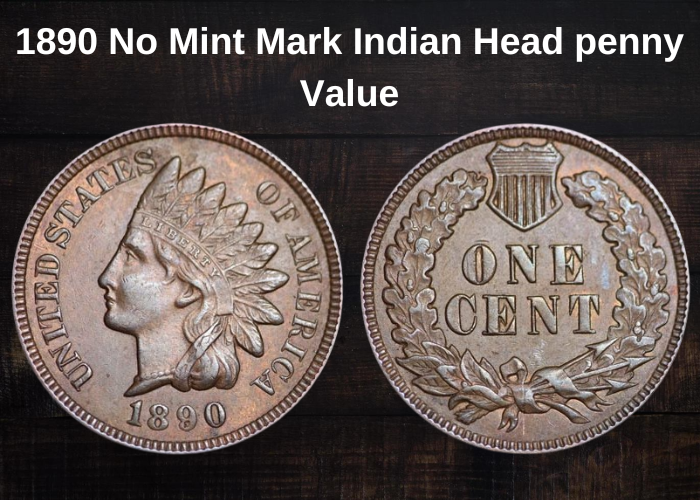
The 1890 Indian Head penny is highly collectible, and its price varies significantly based on its condition and grade:
- Total mintage: 57,180,114, all from the Philadelphia Mint.
- Most common condition: Brown-toned coins, typically in lower grades, which can be found for $1 to $50 depending on wear.
- Mint State (MS) coins: More scarce, with prices ranging from $80 to $350 for pieces in better condition.
- Top-tier coins (MS 66): These are rare and highly valued. The price can reach $1,000, with a GEM BU brown penny selling for $1,150 at a 1999 auction.
For Red-Brown pennies, which are slightly more expensive:
- Price range: $85 to $1,200, with MS 66 graded coins fetching up to $2,250. A notable piece even sold for $4,113 in 2014.
Red pennies are the most valuable in the 1890 series:
- MS 63: Starts at $200.
- MS 64: Around $550.
- MS 65: Typically $1,150.
- MS 66: Can reach $6,500.
- The most expensive coin from the 1890 set was a MS 67+ red penny, which sold for $91,063 in 2020, setting a record for this series.
This price variation underscores the importance of proper grading when determining the value of these coins.
1890 proof Indian Head penny Value
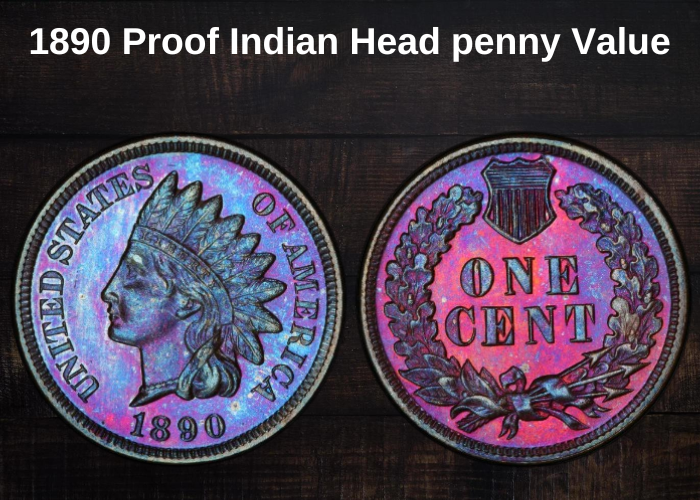
In addition to the regularly minted circulation pennies, the Philadelphia Mint produced 2,740 proof pennies in 1890, intended exclusively for collectors. These proof coins have different color tones, which significantly impact their price:
1. Brown Proof Pennies (PR 60 to PR 66):
- Price range: $185 to nearly $1,000 depending on the quality.
2. Red-Brown Proof Pennies (PR 60 to PR 66):
- Price range: $200 to $2,000, with the best-preserved pieces in PR 67 reaching $2,200 to $2,640.
3. Red Proof Pennies:
- Price range: $250 to $4,000 for most pieces in PR 60 to PR 66 grades.
- The most expensive red 1890 PR 65 penny, with CAM (Cameo) quality, sold for $5,040 in 2019, highlighting its rarity and superior appeal.
These price differences reflect the increasing desirability and value of coins with better toning and exceptional preservation.
Rare 1890 Indian Head Penny Errors List
The 1890 Indian Head penny set is generally free from many common minting errors. However, a few notable imperfections, such as the double-strike error, do exist. These coins are particularly sought after by collectors due to their rarity and unique characteristics.
Coins with such errors are usually priced higher than standard pennies, making them a valuable addition to any collection. Double-strike errors, in particular, are highly collectible and can significantly increase the coin’s market value, especially if they are in good condition.
Double strike
The double-strike error is a significant and sought-after imperfection among 1890 Indian Head pennies. This occurs when a coin is struck twice by the die, usually because it wasn’t removed from the die properly between strikes. As a result, the design appears off-center or has visible doubling, making it a distinct and valuable error.
Collectors are especially interested in these double-struck pieces because of the slight design doubling, which can range from subtle to more obvious, depending on the coin. The value of these coins varies, but on average, an 1890 Indian Head penny with this error can fetch between $500 to $2,000, depending on the coin’s condition and how noticeable the error is. The more pronounced and well-preserved the error, the higher the price is likely to be.
Tripled die obverse
The misaligned die error occurs when the coin’s hub and die are improperly aligned during the minting process. This results in design elements being offset, making the coin appear misaligned. These coins are considered valuable by collectors due to their rarity and unique appearance.
For 1890 Indian Head pennies with this error, the prices generally range in the few hundred dollars, with auction records typically falling between $460 to $560. The final price of these coins depends on factors like the degree of misalignment and the overall condition of the coin.
Misplaced date (MPD)
The misplaced date error occurs when one or more digits of the date are incorrectly positioned on the die during the minting process. As a result, the date appears misaligned or off-center on the coin’s obverse. This error makes the coin stand out, and as a result, it is more valuable than regular, correctly struck coins.
Coins with this error are particularly sought after, especially in good condition. For example, a 1890 Indian Head penny with a misplaced date in MS 64 grade was sold for $700 at auction in 2019, reflecting the premium collectors are willing to pay for such rare and unique pieces.
Misaligned die clash
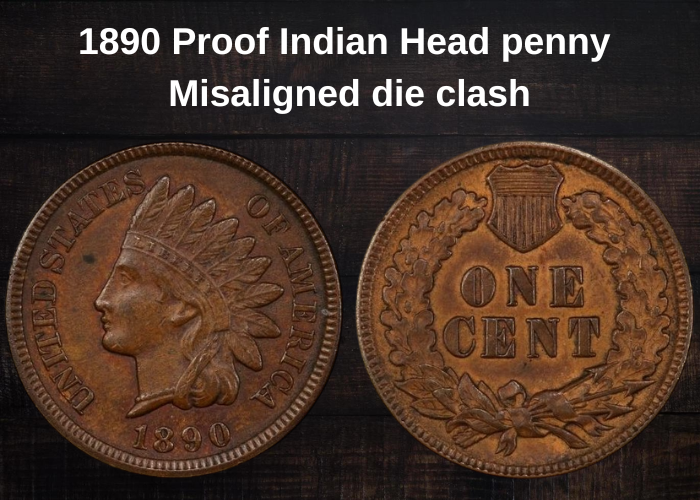
The misaligned die error happens when the hammer die and anvil die are not properly aligned, either horizontally or vertically. This misalignment causes the design to be struck unevenly on the coin, resulting in imperfections on its surface.
In the case of the 1890 Indian Head penny, such errors make the coin more collectible and valuable. An MS 63 brown example of this misalignment error was sold on eBay in 2019 for $900, highlighting how much collectors are willing to pay for a coin with a significant die misalignment flaw. These coins are rare and sought after, especially in higher grades.
Where to Sell Your 1890 Indian Head Penny
If you’re looking to sell your 1890 Indian Head penny, there are several options, both online and through local dealers. Here’s a guide to help you choose the best option:
Online Marketplaces:
- eBay
- Pros: Large audience, easy-to-use platform, auction-style listings can drive up the price.
- Cons: eBay fees, competition with other sellers, shipping risks.
- Heritage Auctions
- Pros: Trusted auction house, specialized in numismatics, offers professional grading and marketing.
- Cons: Auction fees, must wait for auction dates.
- Stack’s Bowers Galleries
- Pros: Well-established numismatic auction house, great for rare coins.
- Cons: High auction fees, requires expert evaluation.
- Great Collections
- Pros: Focus on high-end coins, competitive auctions.
- Cons: Only the highest-quality coins fetch premium prices.
- PCGS or NGC Auction Sites
- Pros: Trusted by collectors, secure platforms, coins are often graded.
- Cons: Listing fees, long timeframes for auctions.
- Coin Shop Websites (like APMEX, JM Bullion)
- Pros: Direct selling to dealers, quick transactions.
- Cons: Potentially lower prices compared to auctions.
Local Coin Dealers:
- Pros: Immediate payment, no shipping risks, personal interaction.
- Cons: May offer lower prices than online auctions or marketplaces.
You can use resources like Coin Dealers Near Me (searchable online) to find reputable local dealers with good customer reviews.
FAQ About the 1890 Indian Head Penny
What makes an 1890 Indian Head penny rare?
- While many 1890 Indian pennies are available in lower grades, coins in better conditions, such as MS 66 or higher, are much rarer. Some errors like double strikes or misaligned dies add to the rarity and value.
Which 1890 Indian Head penny is worth a lot of money?
- The 1890 MS 67+ red penny holds the record, selling for $91,063 in 2020.
- Other high-value coins include 1890 PR 65 CAM and 1890 MS 66 red-brown examples, which have sold for tens of thousands of dollars at auction.
How much is the 1890 No Mint mark Indian Head penny worth?
- Brown pennies: $1 to $40 in circulated condition, with perfect specimens ranging from $42 to $937.50.
- Red-brown pennies: $140 to $1,750.
- Red pennies: $180 to $4,500, with the record price at $91,063 for a PR 67+ coin.
What is the most expensive Indian Head penny?
- The most expensive Indian Head penny ever sold is the 1864 L On Ribbon penny, which fetched $161,000 in 2011.
- The 1877 Indian Head penny is the most expensive regular strike, sold for $149,500 in 2007.
Selling your 1890 Indian Head penny, especially one with unique features or errors, can be a profitable venture if you choose the right platform and market it well!

